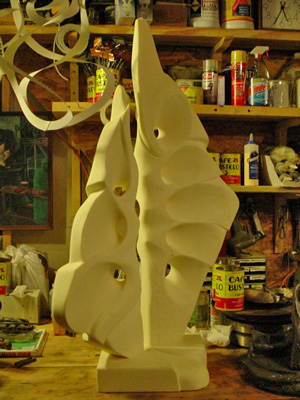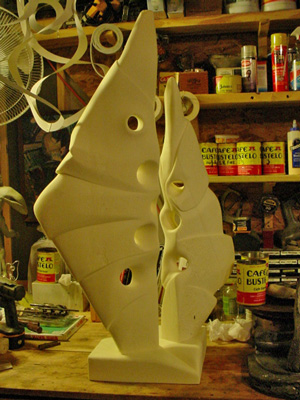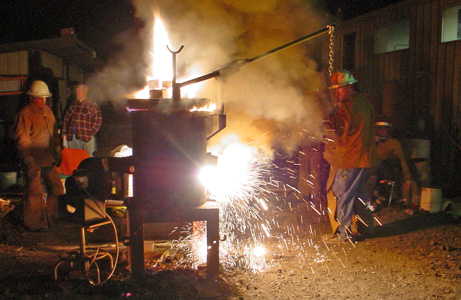

©2010
Cast Iron
A new, very old way of working.
Last winter was a time of experimentation for me. One of those experiments was in preparing some models in carved foam
to take to a casting workshop in Tucumcari, New Mexico. Having had little experience in carving, and none in casting, I did my
best to read up on techniques and materials to work in. I had many scraps of 3" thick polyurethane sheeting left over from insulating
a small studio building, and it seemed the ideal, low pressure way to enter into carving. Dense enough to sand to a refined surface, yet soft
enough to easily carve, and definitely unprecious enough to allow for free creative reign to play and fail until something interesting came
along (unlike, say, a piece of pricey marble that would demand some basic competence and vision be established before the first hammer blow).
Eventually I found my way.


The process of turning a few pounds of foam into several hundred pounds of cast iron is hot, dirty, dangerous fun. Besides the Tucumcari
pour I've also since participated in one here in Moncure, NC. It's a different way of working in metal from the fabricating of shapes by welding,
and it will never take the place of that way of working for me, but it's a good way to touch on one of the most ancient of metal working
traditions. Computer design can never substitute for the visceral sense of creation this intense dance with fire generates.


Packed in sand molds, the original polyurethane carving is burned out by the molten iron. As the metal eats into the foam
enough resistance is encountered to create the random crevassing in the surface of the finished sculpture, something I didn't
anticipate and was pleasantly surprised by. Click on any of the images below to see larger and alternate views.